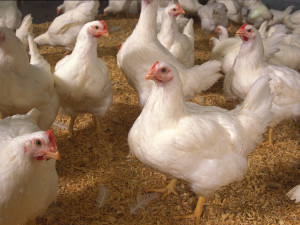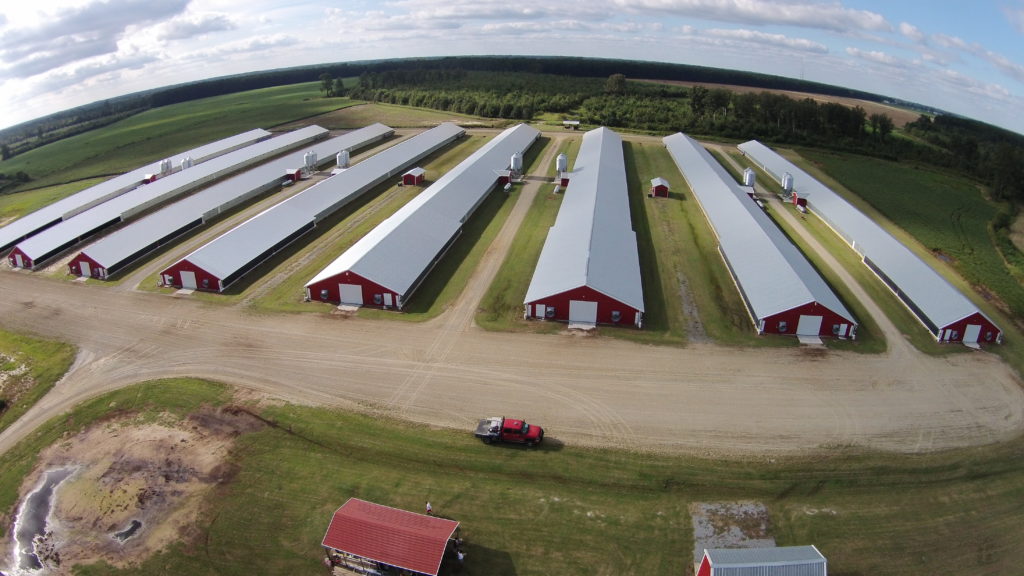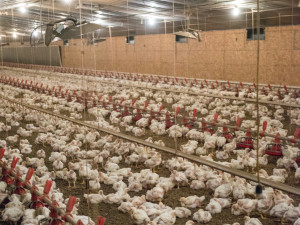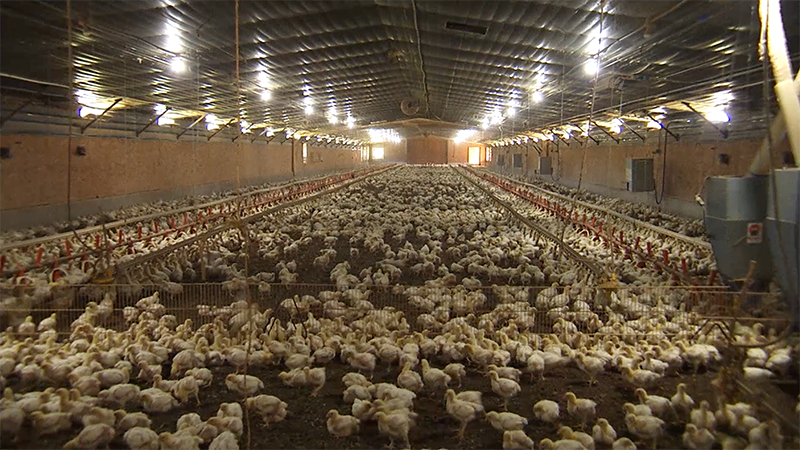I’ve seen a lot of conversation about the welfare of broiler chickens, from growth rates to housing to processing. What is the industry’s perspective?
Chicken farmers and producers take pride in the care of their broiler chickens (chickens raised for meat), and the fact is that chickens are as healthy as they’ve ever been. But we know it’s on us as an industry to do a better job of providing more information about how our chickens gets from farm to table and the welfare guidelines for broiler chickens – so we wanted to provide information on a few topics that you may have questions about:
Chicken Size & Growth Rates
 It is a fact that today’s chickens grow bigger and faster than the chickens from years past. It is also a fact that today’s chickens are healthier, more affordable, and feeding more people than ever before, while having less impact on the environment. Through a number of improvements in breeding, nutrition, veterinary care and bird health, today’s chicken farmers are able to raise bigger and healthier birds faster. All of the measurable data show that chicken’s health continues to improve.
It is a fact that today’s chickens grow bigger and faster than the chickens from years past. It is also a fact that today’s chickens are healthier, more affordable, and feeding more people than ever before, while having less impact on the environment. Through a number of improvements in breeding, nutrition, veterinary care and bird health, today’s chicken farmers are able to raise bigger and healthier birds faster. All of the measurable data show that chicken’s health continues to improve.
Broiler chickens grow at different rates, depending on the breed and genetics of the birds. Farmers may choose to raise slower or faster growing birds, depending on several factors – and shoppers can also choose to purchase meat based on what aligns with their preferences and budgets.
Number of Chickens per House (also known as “Stocking Density”)
The number of birds in a chicken house is based on a few factors, including the overall size of the barn and the size of the equipment in the house – and is measured to ensure the chickens have space to walk around and ready access to fresh water and feed throughout their life.
On average, there are about 22,000 chickens in a house about the size of two football fields. The National Chicken Council Broiler Welfare Guidelines require that chickens have enough space to eat, drink, rest and move around freely.
To get another perspective on how large chicken houses really are, this aerial photo conveys their size.

In addition, ventilation and housing equipment is continuously adjusted to provide a climate-controlled environment suitable to the bird’s age and needs.
For an inside look at chicken houses, visit our Day in the Life videos.
Lighting
Lighting within chicken houses is customized so that birds are stimulated to be active during the day and allow for time to rest during evening hours. This also provides more ideal and stable lighting for the chickens throughout the entire year, to prevent injuries and ensure they are growing at a healthy rate.
Many studies have evaluated the ideal amount of light for each stage of bird growth. Click here and here for more information.
Housing
Today, the majority of broiler chickens in the U.S. are grown in enclosed barns to keep the birds safe from extreme weather conditions, predators, insects and the possible introduction of diseases. Broilers are grown on loose litter (which can be wood shavings, rice hulls, or some combination of plant materials) and can freely move within the enclosed barn.
It’s important to note that no broiler chickens are raised in cages. Ever.
Research is underway to determine the implications of adding “enrichments” in a chicken house, like straw bales or climbing equipment, to the health and wellbeing of the flock.
Ensuring Chickens are Relieved of Pain before Processing
When the time comes for chickens to go to market, the birds are transported to a poultry processing facility where they are rendered unconscious to prevent pain during the process.
There are two basic approaches to achieving unconsciousness —electrical stunning and controlled atmospheric stunning (CAS). Electrical stunning is achieved by wetting the birds’ heads in water or a mist and creating a mild electrical circuit. The second, CAS, exposes them to either a mixture of inert gases (nitrogen and argon) or concentrations of carbon dioxide, which causes them to lose consciousness.
If you would like to see how birds are stunned and processed, you can watch this this video on processing.
Research has not consistently demonstrated one commercially available stunning method to be superior to another. Based on current research, the American Association of Avian Pathologists, the American College of Poultry Veterinarians and the National Chicken Council believe that both low voltage and CAS systems are humane methods that uphold the welfare of broiler chickens. It’s important to note both processes are audited by third party auditors and customers as part of a company’s animal welfare plan, and are overseen by inspectors from the U.S. Department of Agriculture.
For more information about stunning, click here.
To download a PDF of this FAQ on broiler chicken welfare, click here.


